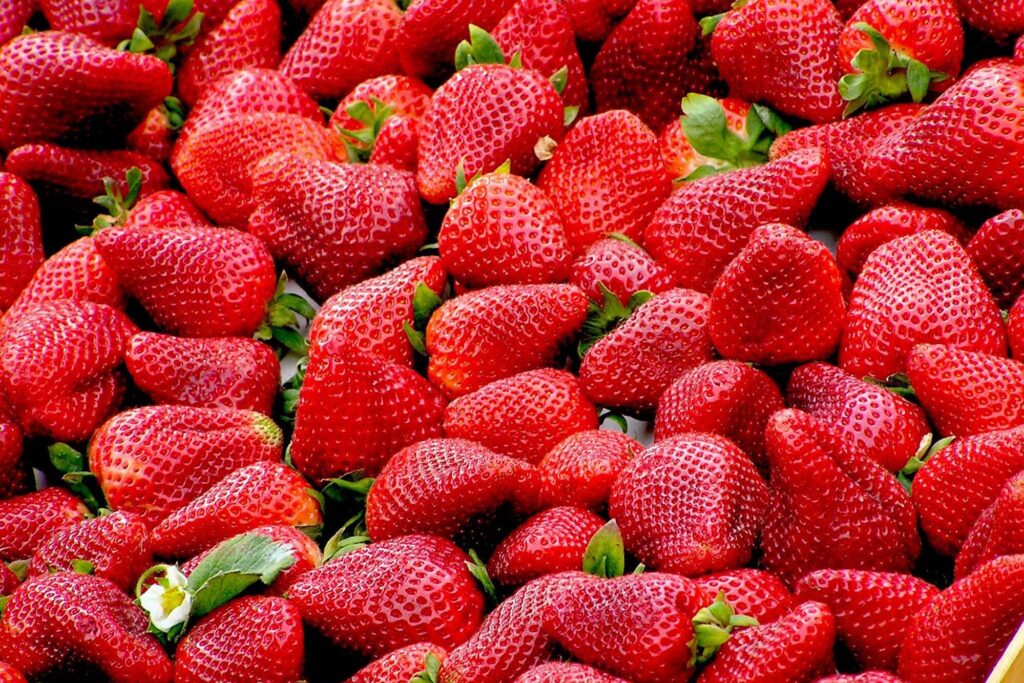How Long Does it Take for Strawberries to Grow?
Strawberries are a popular and delicious fruit that many gardeners enjoy growing. However, if you’re new to strawberry cultivation, you might be wondering how long it takes for these plants to grow and produce fruit. In this comprehensive guide, we’ll explore the various stages of strawberry growth, the factors that influence their development, and provide a timeline for when you can expect to harvest your first crop.
Strawberry Growth Stages
Strawberry plants go through several distinct growth stages, each with its own timeline:
- Planting and Establishment: When you first plant your strawberry crowns or runners, they will focus their energy on establishing a strong root system and producing leaves. This process typically takes 4-6 weeks.
- Flower Bud Formation: As the days grow longer and temperatures warm in spring, strawberry plants will begin forming flower buds. This usually occurs 4-6 weeks after planting.
- Flowering: Once the flower buds have formed, the plants will produce white flowers. Pollination by insects is crucial at this stage for fruit set.
- Fruit Development: After pollination, the flowers will develop into green, unripe strawberries. Over the next 4-6 weeks, the fruits will grow and ripen, changing color from green to white to red.
- Harvest: Ripe strawberries are ready to harvest when they are fully red in color and easily detach from the plant with a gentle tug. The first harvest typically occurs 4-6 weeks after flowering.
Factors Affecting Strawberry Growth
Several factors can influence the growth rate and development of strawberry plants:
| Factor | Effect |
|---|---|
| Variety | June-bearing varieties typically produce a single large crop, while everbearing and day-neutral varieties produce multiple harvests throughout the season. |
| Climate | Strawberries thrive in cool, temperate climates. Hot weather can slow growth and reduce fruit quality. |
| Soil | Well-draining, nutrient-rich soil with a pH between 5.5 and 6.5 is ideal for strawberries. |
| Sunlight | Strawberries require at least 6 hours of direct sunlight per day for optimal growth and fruit production. |
| Water | Consistent moisture is essential, especially during flowering and fruit development. |
| Mulch | Applying a 2-4 inch layer of organic mulch can help retain soil moisture and suppress weeds. |
Timeline for Strawberry Growth
The time it takes for strawberries to grow from planting to harvest can vary depending on the factors mentioned above, but here’s a general timeline:
| Stage | Time |
|---|---|
| Planting | Spring or fall, depending on your climate |
| Establishment | 4-6 weeks |
| Flower Bud Formation | 4-6 weeks after planting |
| Flowering | 4-6 weeks after flower bud formation |
| Fruit Development | 4-6 weeks after flowering |
| Harvest | 4-6 weeks after flowering, typically in late spring or early summer |
So, in total, it takes approximately 16-24 weeks (4-6 months) from planting to the first harvest, depending on the variety and growing conditions.
Extending the Strawberry Season
To extend your strawberry harvest season, consider planting a combination of June-bearing, everbearing, and day-neutral varieties. June-bearing varieties will provide a large, concentrated crop in early summer, while everbearing and day-neutral varieties will produce multiple harvests throughout the season.You can also use row covers or low tunnels to protect plants from frost and extend the growing season in spring and fall.
Choosing the Right Strawberry Variety
Selecting the right variety of strawberry is crucial for successful cultivation and can significantly impact your harvest. Here are the main types of strawberries you can consider:
- June-Bearing Strawberries:
- Description: These varieties produce a single, large crop in late spring to early summer, typically over a 2-3 week period.
- Examples: ‘Honeoye’, ‘Cavendish’, and ‘Earliglow’.
- Best For: Gardeners who prefer a concentrated harvest for canning or freezing.
- Everbearing Strawberries:
- Description: These varieties produce fruit throughout the growing season, usually yielding two to three harvests from spring to fall.
- Examples: ‘Quinault’, ‘Ozark Beauty’, and ‘Albion’.
- Best For: Gardeners who want a steady supply of fresh strawberries over an extended period.
- Day-Neutral Strawberries:
- Description: These varieties produce fruit regardless of day length, allowing for continuous harvests throughout the growing season.
- Examples: ‘Seascape’, ‘Tribute’, and ‘Toscana’.
- Best For: Gardeners in regions with varying day lengths who want consistent production.
Preparing the Planting Site
Proper site preparation is essential for healthy strawberry plants. Here are the steps to prepare your planting area:
- Choose the Right Location:
- Select a site that receives full sun for at least 6-8 hours a day. Avoid areas with heavy shade or waterlogged soil.
- Soil Testing:
- Conduct a soil test to determine pH and nutrient levels. Strawberries prefer slightly acidic soil with a pH of 5.5 to 6.5.
- Amend the Soil:
- Based on soil test results, amend the soil with organic matter, such as compost or well-rotted manure, to improve fertility and drainage.
- Tilling:
- Till the soil to a depth of 12-15 inches to break up compacted soil and incorporate organic matter.
- Creating Raised Beds:
- Consider planting strawberries in raised beds to improve drainage and soil temperature. Raised beds can also help prevent soil-borne diseases.
Planting Strawberries
Once your site is prepared, it’s time to plant your strawberries. Here’s how:
- Timing:
- The best time to plant strawberries is in early spring as soon as the soil is workable. In warmer climates, fall planting is also an option.
- Spacing:
- Space plants 12-18 inches apart in rows that are 3-4 feet apart. This spacing allows for adequate air circulation and room for runners.
- Planting Depth:
- When planting, ensure that the crown (the point where the roots meet the stem) is at soil level. Planting too deep can cause the crown to rot, while planting too shallow can expose the roots.
- Watering After Planting:
- Water the plants thoroughly after planting to help settle the soil around the roots and reduce transplant shock.
Frequently Asked Questions (FAQ)
1. How long do strawberry plants live?
With proper care, strawberry plants can live for 3-5 years, but their productivity declines after the second year. It’s recommended to replace older plants with new runners or crowns every 2-3 years.
2. Can I grow strawberries from seed?
Yes, you can grow strawberries from seed, but it takes longer than planting crowns or runners. Seed-grown plants will typically take 12-18 months to produce their first crop.
3. How many strawberries can I expect from one plant?
The yield per plant varies depending on the variety and growing conditions, but you can expect to harvest 0.5-1 pound of strawberries per plant per year.
4. Do strawberries need full sun?
Yes, strawberries require at least 6 hours of direct sunlight per day for optimal growth and fruit production. Partial shade can reduce yields.
5. How often should I water strawberries?
Strawberries need consistent moisture, especially during flowering and fruit development. Water plants when the top inch of soil becomes dry, aiming for 1-2 inches of water per week.For more information on growing strawberries, you can refer to the University of Minnesota Extension guide on Growing Strawberries in the Home Garden.



